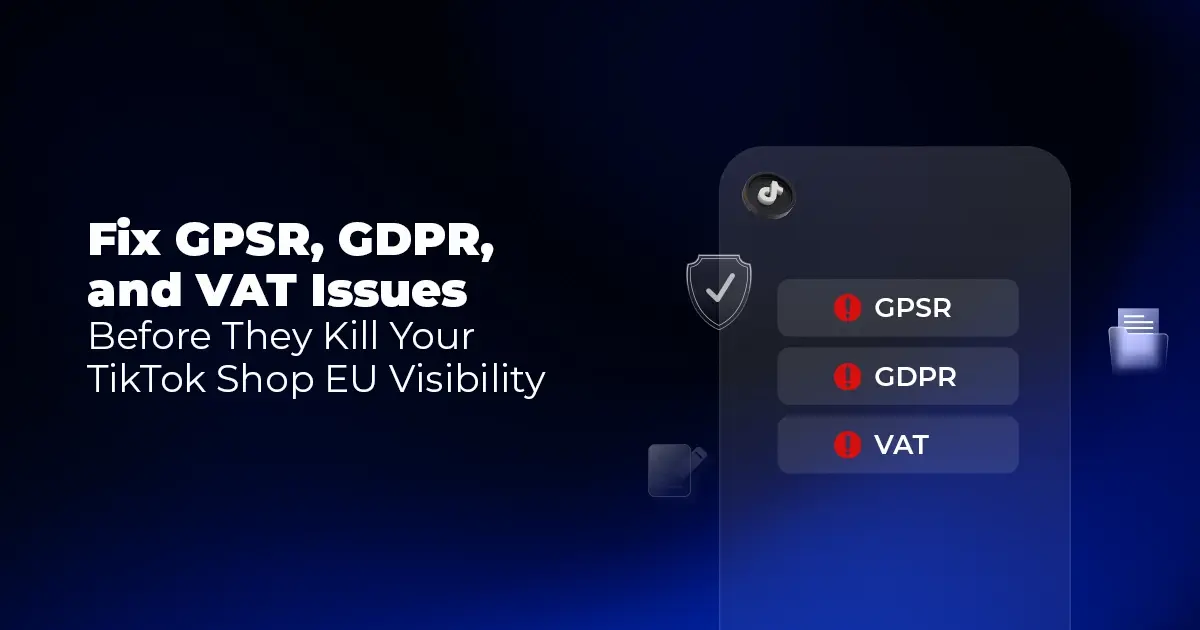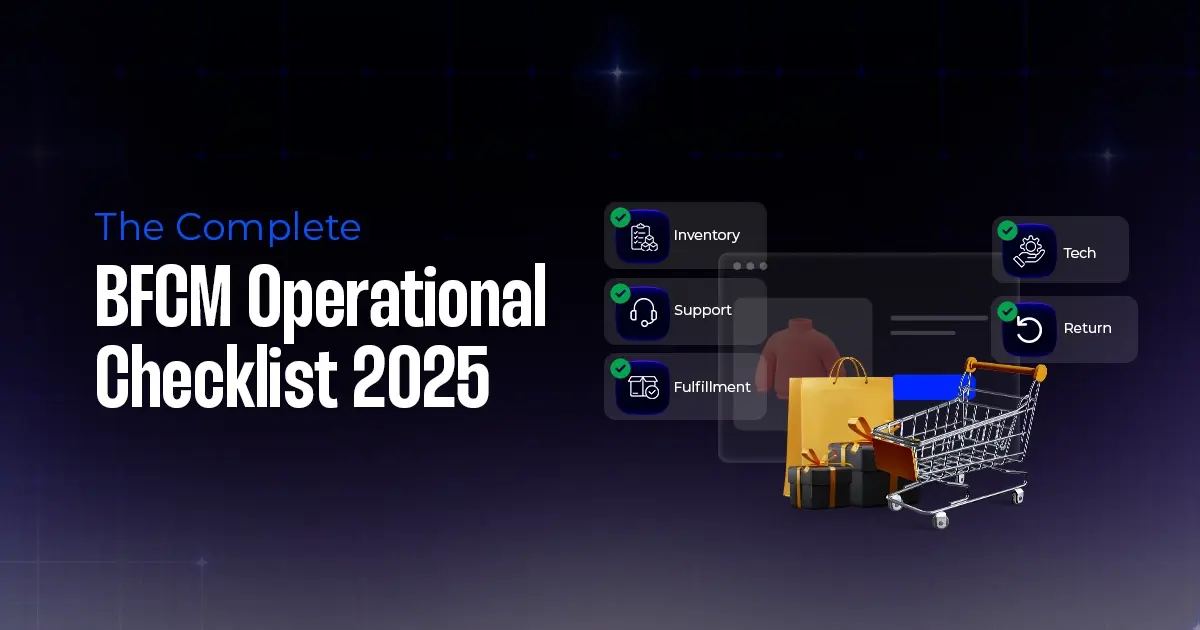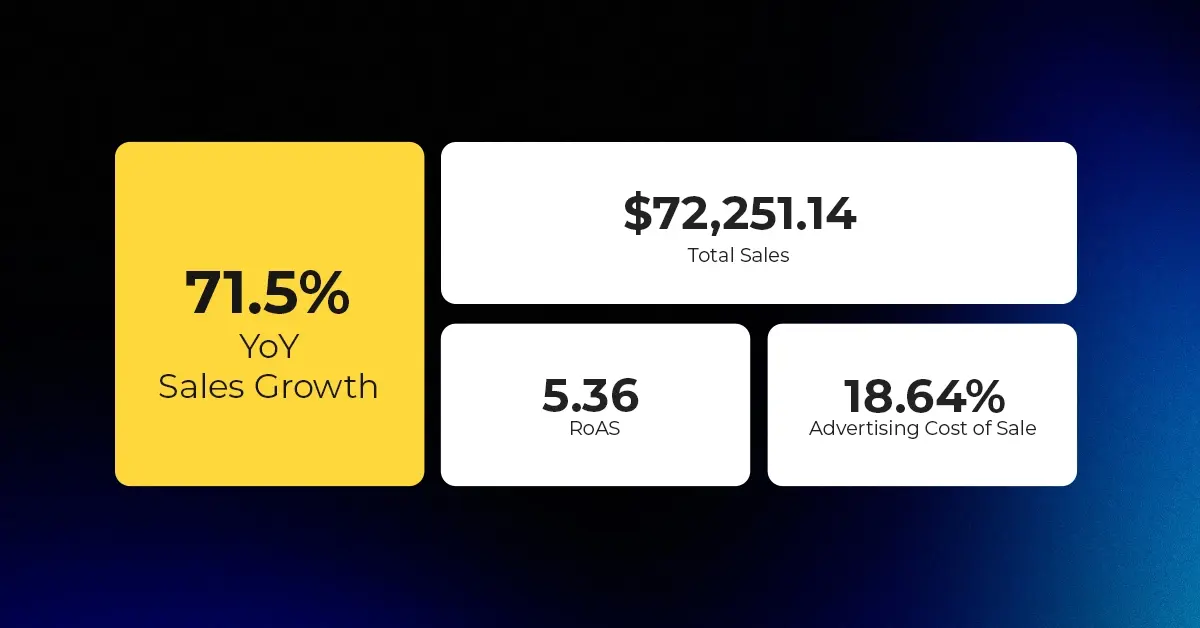BFCM Conversion Tactics: Smart Bundles, Flash Sales & Scarcity Marketing
Reading Time: 13 minutesStill approaching BFCM with generic discounts, last-minute price cuts, or scattered promotions?…
eBay holds a prominent place as a renowned online marketplace. It presents an option to sell a wide array of products to a diverse range of sellers. As a result, in this bustling digital marketplace, having a well defined return policy isn’t just a good idea; it’s a crucial component.
Understanding eBay’s return policies, such as the 30 day return policy, the 14 days window, and the rare “no return” scenarios, can significantly impact your selling experience. Join us as we delve into the ins and outs of eBay’s return policies. We’ll explore how they shape the dynamic eCommerce landscape in the marketplace and how to create an eBay Return Policy that aligns best with your business.
eBay’s return policy is a part of the well designed eBay business policies system that offers various options catering to sellers and buyers. Sellers have the flexibility to choose from multiple return options, including ‘No returns accepted.’ Although eBay highly recommends opting for more buyer friendly choices, such as eBay’s return policy in 14 days, 30 days, or 60 business days. Moreover, sellers can opt for free returns, potentially increasing sales by a significant margin—anywhere from 5% to 25%.
From the buyer’s perspective, eBay aims to provide a hassle-free shopping experience. This means that once you start offering more lenient return options like “eBay 30 days return policy,” you may experience a noticeable boost in sales.
When buyers initiate return requests, the eBay return policy allows sellers to establish rules for quick returns and refunds for the buyer. eBay’s Return Policy emphasizes the importance of balancing seller and buyer convenience.
Initiating returns on eBay involves a collaborative effort between buyers and sellers. It promotes transparent communication. When selling on eBay, you need to outline your stance on returns, specifying conditions under which they’re allowed. These conditions cover aspects like return shipping responsibility and the timeframe for accepting returns post-sale.
Creating a well defined return policy is crucial. Addressing return requests instantly enhances the shopping experience, offering efficient resolutions. For sellers accepting returns, automated rules can streamline return request management. eBay’s return policy for sellers serves various purposes, including:
The eBay Money Back Guarantee provides comprehensive coverage for a wide array of eBay transactions, ensuring buyers have recourse in case issues arise. This policy safeguards buyers’ interests, permitting them to seek a refund if the received item doesn’t meet the outlined criteria.
Here’s a concise breakdown of the eBay Money Back Guarantee, covering its scope, eligibility conditions, and crucial exclusions.
The eBay Money Back Guarantee is applicable in the following circumstances:
Sellers involved in transactions covered by the eBay Money Back Guarantee umbrella:
In cases where sellers offer international shipping or don’t exclude international options:
When a buyer reports non-delivery and meets eligibility criteria, eBay investigates by considering the following:
To establish on-time delivery, eBay requires the following:
For local pickup items, proof of collection includes:
Effective return request management is essential for a successful eBay selling experience. You can establish automated rules for return acceptance or instant refunds to optimize this process and save time. When listing items, you must indicate your return policy and conditions, covering aspects like return shipping costs and the timeframe for requested returns on eBay. But clarity is key; ensure your eBay return policy is well stated in your listings.
Sellers embracing returns can utilize eBay’s automated rules to streamline the process. These rules enable you to:
Automation boosts efficiency and provides excellent customer service by promptly addressing buyer return requests.
eBay provides diverse return policy options catering to different preferences:
Certain product categories may have unique return policies, with some allowing a 14 day return policy:
Here’s a step by step guide to setting up your eBay returns:
For tailored automation, eBay allows the creation of advanced return rules:
The realm of online marketplaces occasionally gives rise to misconceptions, and eBay is not immune to this. Let’s clarify common misconceptions about eBay returns and provide facts.
Clarification: A notable misconception is the assumption that eBay imposes a standardized, one size fits all return policy for all sellers. Every eBay seller enjoys the autonomy to define their unique return terms. This translates to varying return policies across sellers. Sellers can opt to accept returns, set return timeframes, stipulate return shipping responsibility, and establish relevant conditions. Therefore, the outcome is a spectrum of return policies that align with varied seller preferences and business models.
Clarification: Sellers can craft distinct return policies contingent on the item categories listed. This permits nuanced returns management. For instance, sellers can set extended return windows or specific terms for electronics, fashion, or collectables. eBay’s platform accommodates these policy variations to suit the diverse products offered.
Clarification: While eBay equips sellers with tools and guidelines for seamless returns, the returns management rests with individual sellers. The sellers’ responsibilities are initiating refunds, processing returns, and addressing issues. eBay’s role centers on providing a platform conducive to these processes, fostering a transparent and efficient marketplace.
In the dynamic world of eBay transactions, two key things make all the difference: talking things out effectively and making buyers happy. Unlike elsewhere, eBay doesn’t force everyone to follow the same return rules. That means you can create rules that match what you sell and how you do things.
Every seller’s return policy shows how serious they are about giving top notch service while recognizing the different stuff they sell. Sellers can improve things by being clear about their return rules and using automatic tools to handle certain parts of the return process. Above all, blending clear rules with clever automation moves is like making a masterpiece.

Reading Time: 13 minutesStill approaching BFCM with generic discounts, last-minute price cuts, or scattered promotions?…

Reading Time: 3 minutesTikTok Shop reached a major milestone during its largest U.S. “Global Black…

Reading Time: 3 minutesOpenAI has announced a new AI-powered shopping research tool designed to help…

Reading Time: 9 minutesIf your TikTok Shop listings often sit in review or your visibility…

Reading Time: 3 minutesAmazon has rolled out a new “Seller Challenge” feature for eligible Account…

Reading Time: 3 minutesWalmart Marketplace has sharpened its requirements around product classification (category, type group,…

Reading Time: 3 minutesJust ahead of Black Friday, Amazon is enforcing tighter controls on its…

Reading Time: 11 minutesWhere holiday prep of past years focused on legacy channels like Amazon,…

Reading Time: 11 minutesThe eCommerce shift you actually need to act on Multi-channel fulfillment has…

Reading Time: 10 minutesBlack Friday Cyber Monday (BFCM) isn’t a weekend anymore; it’s a two-month…

Reading Time: 2 minuteseBay is quietly testing a new feature that could reshape how buyers…

Reading Time: 2 minutesAmazon is stepping into a new era of value commerce with the…

Reading Time: 11 minutesThe $240 Billion BFCM Opportunity & Why Operations Matter Every seller, business,…

Reading Time: 7 minutesTL;DR — Your 60-Second BFCM Battle Plan Time remaining: 3 weeks until…

Reading Time: 2 minutesChina’s Double 11 shopping festival — the world’s largest annual online retail…

Reading Time: 2 minutesAs the holiday season approaches, TikTok Shop has released its September 2025…

Reading Time: 3 minutesIn a continued effort to enable sellers and stimulate new product launches…

Reading Time: 2 minutesAs global trade enters a new phase of regulation and cost restructuring,…

Reading Time: 2 minutesOpenAI Turns to Amazon Web Services in $38 Billion Cloud Deal: What…

Reading Time: 4 minutesAbout the Client TMRG is a global health and wellness brand with…